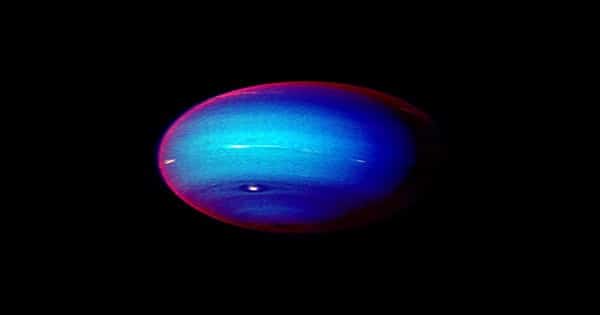Meteorites that have impacted our planet over the years have left us with a mystery: significant amounts of xenon appear to be vanishing from the Earth’s atmosphere.
Meteorites, some of which are older than Earth, provide insights into the early Solar System and our planet. Rocky planets developed when these smaller bodies clumped together, therefore they should provide information about the chemical composition of our early planet.
So it was perplexing to discover that in carbonaceous chondrites – old, carbon-rich meteorites – xenon levels were significantly greater than expected for other gases. Because the rocks provide information regarding gas proportions in the early Solar System, we can conclude that the amount of xenon in our current atmosphere is around 10% of what we would expect. This is particularly perplexing given how little xenon reacts with other elements.

“Xenon is one of a family of seven elements called the noble gases, some of which, such as helium and neon, are household names,” Elissaios Stavrou, lead author of a 2018 research investigating the missing xenon, noted in a statement at the time. “Their name comes from a kind of chemical aloofness; they normally do not combine, or react, with other elements.”
Argon and krypton, both noble gases, are present in our atmosphere in the expected amounts. So, where has the missing xenon gone? There have been ideas that xenon could be lurking in minerals, the Earth’s core, or even glaciers.
The researchers behind the 2018 paper discovered that under tremendous pressure, xenon may form compounds with other elements.
“Our study provides the first experimental evidence of previously theorized iron-xenon compounds existing under the conditions found in the Earth’s core,” co-author Alexander Goncharov noted. “However, it is unlikely that such compounds could have been made early in Earth’s history, while the core was still forming, and the pressures of the planet’s interior were not as great as they are now.”
It’s possible that a few processes cooperated to trap xenon in the mantle before it was absorbed into the core, but that’s yet to be determined.
Another theory is that the missing xenon departed Earth’s atmosphere long ago through degassing and was taken away into space as meteors struck Earth and sent our primordial atmosphere soaring. Because the heavy gases argon and krypton did not evaporate from our atmosphere, it is unclear why just xenon was whisked away into space while the Earth’s atmosphere was thin.
One team, including Stavrou, discovered evidence to support this hypothesis. The researchers sought to dissolve xenon and argon in perovskite at temperatures and pressures comparable to those seen in the Earth’s mantle. The notion was that xenon could be buried in the magnesium silicate perovskite, which makes up a large portion of the mantel.
“I was quite sure that it must be possible to stuff noble gases into perovskite,” said co-author Hans Keppler in Nature. “I suspected xenon may be in there.”
However, the researchers discovered that, whereas argon could dissolve into the perovskite, xenon only dissolved in tiny amounts. This led the researchers to believe that a large amount of xenon was transported into space while other noble gases stayed on Earth, safely locked away in perovskite.
“This is different than what everyone else is saying. “They say the xenon is here, but it’s hidden somewhere,” Keppler explained. “We are saying it is not here because very early in Earth’s history it had no place to hide.”
The team also stated that the relative abundance of xenon, krypton, and argon in our atmosphere is roughly proportional to how soluble these elements are in perovskite. However, this concept is not without controversy.
If this is the mechanism that led to the depletion of xenon on Earth, it must also apply to Mars. Mars does contain trace levels of xenon in its thin atmosphere. However, it is unclear whether Mars contains enough perovskite to trap enough xenon to explain this. If not, we may need to search again for the missing xenon.
All “explainer” articles are fact-checked to ensure accuracy at the time of publication. Text, images, and links can be modified, removed, or added at a later time to keep information up to date.















